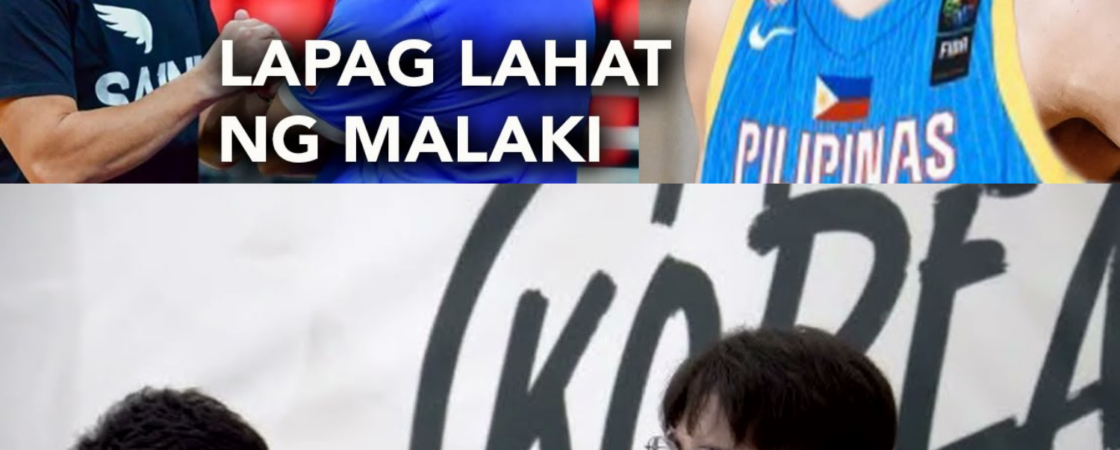Gilas’ Big Man Era Begins | SBP on QMB’s Status | Scouting for Big Men | Small Ball No More
The landscape of Philippine basketball is about to experience a monumental shift, as the era of the “big man” in Gilas Pilipinas basketball is upon us. The small-ball tactics that have characterized the team’s style for years are set to give way to a more traditional, inside-out game with a greater emphasis on dominant post play. This shift is significant not only in terms of strategy but also in terms of personnel, as the Samahang Basketbol ng Pilipinas (SBP) is actively scouting for players who can fill the void in the center position.
The End of Small Ball
For years, Gilas Pilipinas has relied on a versatile, small-ball approach to compete on the international stage. With a roster of multi-position players, the team was able to shift quickly between different playing styles, but this agility often came at the expense of a true presence in the paint. Whether it was the absence of a reliable post-up player or struggles with rebounding, the lack of a true big man became a glaring weakness, particularly when facing the physically imposing teams of Asia, or when going up against the giants of the global basketball scene.
While small-ball strategies often resulted in fast-paced, perimeter-oriented offense, the deficiencies were exposed in critical matchups, especially in international competitions like the FIBA World Cup and the Asian Games. The lack of a big man to control the boards, protect the rim, and dominate in the paint left Gilas vulnerable in high-pressure situations. Consequently, the SBP has acknowledged that the future success of the team lies in strengthening the frontcourt.
SBP on QMB’s Status
One of the most talked-about figures in Philippine basketball is the towering 7-foot center, Kai Sotto. Known for his elite shot-blocking ability, smooth footwork, and potential as a versatile offensive weapon, Sotto has long been touted as the future of Gilas’ big man rotation. His status has been under intense scrutiny, particularly as the national team prepares for upcoming tournaments and qualifiers.
The SBP has made it clear that Sotto’s involvement in Gilas will be pivotal in the transition from small ball to a more traditional setup. However, Sotto’s status is contingent on his continued development and his ability to commit to the national team, especially as he navigates his career overseas. His performances in international leagues, particularly in the NBA G League and other competitions, have drawn considerable attention, and his potential is undeniable.
Nonetheless, the SBP has emphasized that while Sotto remains a crucial piece of the puzzle, the team cannot rely solely on one player to anchor their frontcourt. In light of this, the SBP has already begun scouting for additional big men who can complement Sotto’s style and fill any gaps in the team’s big man lineup.
Scouting for Big Men
The push for a more traditional big man is not just about finding size but also about identifying players who can make an immediate impact on both ends of the court. A true center needs to possess a blend of skills that can help Gilas in areas where small-ball teams have faltered in the past. First and foremost, this includes strong rebounding and rim protection. Without a solid presence in the paint, it’s difficult to secure defensive rebounds, defend against opposing bigs, or control the pace of the game inside.
In terms of offensive contributions, the modern big man is expected to contribute not only in post plays but also in pick-and-roll situations, setting screens to free up shooters, and possibly even stretching the floor with a mid-range jumper or three-pointer. This flexibility is something the SBP is actively looking for, as it gives Gilas the best chance to remain competitive while incorporating a traditional big man into their rotation.
To this end, the SBP has been exploring the local and international basketball scenes to scout players who fit this mold. The national program is looking at both homegrown talent and Filipinos playing abroad who might be eligible to join the national team. Players like Carl Tamayo, who is a dynamic forward with the potential to play both inside and on the perimeter, could also fill in as versatile bigs in Gilas’ lineup. Similarly, players with overseas experience, especially those competing in more physical leagues, will be heavily considered for their ability to adjust to the demands of international competition.
Small Ball No More
The shift away from small-ball basketball doesn’t mean that Gilas Pilipinas will abandon their fast-paced, high-scoring game altogether. Instead, it represents a broader shift in philosophy, where the team balances its perimeter-oriented offense with a more robust inside game. This change is meant to give Gilas a greater tactical flexibility, enabling them to counter teams with dominant centers or powerful forwards while still being able to execute on the fast break or shoot from the outside.
Incorporating a dominant big man into the rotation will not only bolster Gilas’ defensive capabilities but will also open up more offensive possibilities. With the presence of a strong post player, the perimeter shooters like Dwight Ramos, AJ Edu, and Justin Brownlee will have more room to operate, as defenders are forced to respect the inside game. This two-pronged approach—combining inside and outside threats—will make Gilas much more unpredictable and difficult to defend against.
In conclusion, the big man era is just beginning for Gilas Pilipinas, and the transition from small ball will represent a new chapter in the team’s development. With the SBP focused on strengthening the frontcourt, it is clear that the national team is committed to adapting to the evolving dynamics of international basketball. The presence of players like Kai Sotto, along with other emerging talents, gives the team hope that they can compete at the highest level with a more balanced roster. Fans of Philippine basketball can look forward to a more dynamic and physically imposing version of Gilas in the years to come.



